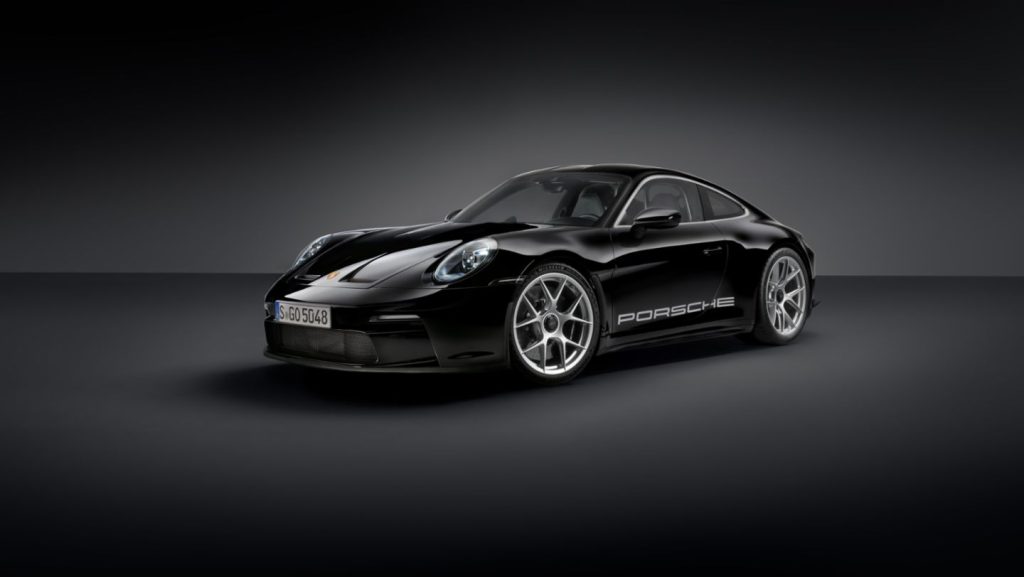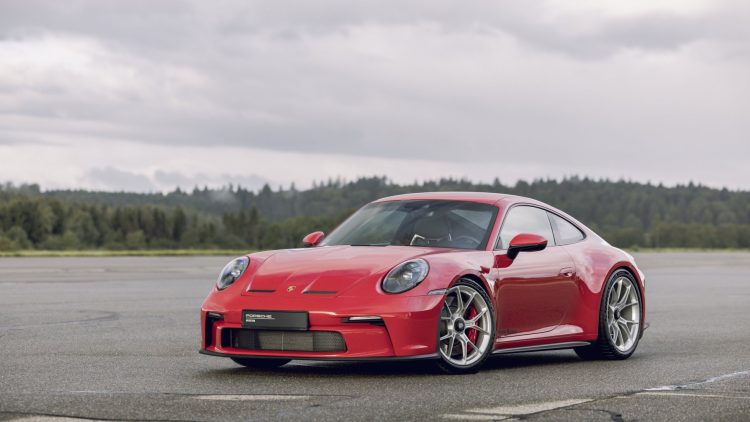The world of luxury vehicles has undergone a dramatic transformation over the past century, evolving from the sleek, gas-powered classics of the 20th century to today’s cutting-edge electric supercars that blend power with sustainability. For collectors and automotive enthusiasts alike, both categories represent more than just vehicles; they are investments, status symbols, and vehicles that embody a deep passion for performance and craftsmanship. In this article, we explore the fascinating intersection of classic cars and electric supercars, delving into their unique investment potential, driving experience, and why they have become integral to both modern luxury transit and exclusive collectibles. We’ll also analyze how automotive innovation, sustainability, and design are shaping the future of luxury rides, and how these vehicles reflect the changing tastes of today’s elite car collectors.
The Allure of Classic Luxury Cars: Timeless Elegance and Investment Potential
Classic cars have always held a special place in the world of luxury, with many of them becoming invaluable treasures for collectors. From Ferraris and Porsches to Rolls-Royces and Aston Martins, these vehicles represent not only engineering excellence but also a piece of history. But beyond their nostalgic appeal, classic cars have long been regarded as investment vehicles, with some models appreciating dramatically over time.
1. The Timeless Appeal of Classic Cars
Classic cars are the epitome of elegance, often defined by their craftsmanship, design, and the level of artistry involved in their creation. These vehicles evoke a sense of romance and nostalgia, harkening back to a time when driving was more about the journey than simply reaching a destination.
The appeal of classic cars lies in their unique character and the attention to detail that was common in the pre-industrial age of mass production. Manufacturers such as Bugatti, Mercedes-Benz, and Jaguar are revered for producing cars that were as much works of art as they were functional machines. The rarest models are not only incredibly beautiful to look at, but they also offer a driving experience that modern vehicles simply can’t replicate. The engine growl, the precision of the handling, and the craftsmanship of the interiors all contribute to making the experience of driving a classic car incomparable.
2. Investment Value: Why Classic Cars Appreciate
One of the biggest attractions of classic luxury cars is their investment potential. While not all vehicles will see significant appreciation, rare, well-maintained, and historically significant models tend to perform exceptionally well in the market. In fact, certain cars have become so valuable that they are now viewed as assets in the same way as fine art or rare jewelry.
The Ferrari 250 GTO, for example, holds the record for one of the most expensive cars ever sold, fetching over $70 million at auction. This price was not driven by performance alone; it was driven by rarity, provenance, and the car’s iconic status in the automotive world. Similarly, other classic models, such as the Porsche 911 and Mercedes 300SL Gullwing, have seen their values climb significantly in recent years, making them highly sought after by collectors looking to invest in automotive history.
Factors that influence the investment potential of a classic car include:
- Limited production: Cars produced in small numbers or special editions are often more valuable because of their rarity.
- Provenance: Cars that have a significant history, such as celebrity ownership or participation in notable racing events, often increase in value.
- Condition: The better the car’s condition (with original parts and low mileage), the higher its potential investment value.
- Historical significance: Vehicles that played a role in shaping automotive history, or have a unique design, can appreciate dramatically.
3. The Collecting Culture: Classic Cars as Showpieces
For many car collectors, owning a classic car is about more than simply investing in a piece of automotive history. Classic cars are often displayed in private collections, museums, or at exclusive events like the Pebble Beach Concours d’Elegance, where collectors can showcase their prized possessions to other enthusiasts and potential buyers. The lifestyle surrounding classic car ownership often includes private track days, VIP experiences, and a strong sense of community, as collectors share their passion for these beautiful machines.

Electric Supercars: The Future of Luxury Ride and Sustainability
As the world turns its focus toward sustainability and innovative technology, the electric supercar has emerged as a powerful statement of the future. These cars offer the same luxury, speed, and performance that traditional gas-powered supercars are known for, but they come with the added benefit of being eco-friendly. Companies like Tesla, Rimac, and Lucid Motors have redefined what is possible in high-performance, electric luxury, proving that electric doesn’t mean sacrificing style or power.
1. Performance Meets Sustainability: The Rise of Electric Supercars
Electric supercars represent the fusion of cutting-edge technology with the most extreme performance capabilities. Take Rimac Automobili’s Nevera, for example—a Croatian-built electric hypercar that can accelerate from 0 to 60 mph in under 2 seconds. While electric motors are known for their instant torque and seamless acceleration, the Nevera and other electric supercars offer incredible top speeds and handling that rival traditional gas-powered hypercars.
The advantages of electric supercars go beyond performance. As the automotive industry embraces sustainability, these vehicles are increasingly viewed as environmentally friendly alternatives to their fossil-fueled counterparts. With zero emissions, electric supercars align with the growing demand for eco-consciousness and luxury. Brands like Porsche (with its Taycan), Lucid Motors (with the Lucid Air), and Tesla (with the Roadster) offer not only high-performance vehicles but also a level of sophistication and design that appeals to the most discerning luxury buyers.
2. Investment Potential: Are Electric Supercars the Next Classic Cars?
Just as classic cars have proven to be valuable investments over time, electric supercars are beginning to show signs of becoming collectible assets. Although it may be too soon to predict how the market will evolve, the early signs indicate that limited edition and innovative models will likely appreciate in value as demand for eco-friendly luxury cars grows.
For example, Tesla’s Roadster, despite being an electric vehicle, has already gained legendary status in the automotive community. Rimac’s Nevera and the Pininfarina Battista are also expected to be sought after by collectors due to their advanced technology, limited production, and cutting-edge performance. As electric supercar technology continues to evolve, these vehicles could very well become tomorrow’s classic cars.
Factors that influence the investment potential of electric supercars include:
- Technological innovation: Cars that offer groundbreaking battery technology, autonomous driving features, or other cutting-edge advancements are likely to increase in value.
- Limited edition models: Like their gasoline-powered counterparts, electric supercars produced in limited quantities are often highly sought after by collectors.
- Brand prestige: Well-known electric car manufacturers, such as Tesla or Rimac, have already built strong brand reputations, which can help boost the long-term value of their vehicles.
3. The Driving Experience: Luxury and Performance Redefined
The experience of driving an electric supercar is unlike anything in the traditional luxury car world. With instant torque and whisper-quiet operation, the driving experience is smooth, effortless, and surprisingly powerful. Unlike classic cars, which often require a certain level of skill and manual control to drive, electric supercars provide a more user-friendly experience without sacrificing excitement or thrill.
Electric supercars also tend to be equipped with futuristic interiors, featuring advanced digital displays, minimalist design, and luxurious materials. They combine traditional luxury features—such as plush leather seats, advanced sound systems, and high-end finishes—with modern technological interfaces, offering a truly cutting-edge driving experience.
Conclusion: The Future of Luxury Transit and Collecting
From the timeless elegance of classic cars to the high-tech innovation of electric supercars, the world of luxury vehicles is changing rapidly, and so too is the world of luxury transit and collecting. Classic cars remain as valuable as ever, not just as symbols of heritage and craftsmanship but also as investments that appreciate in value over time. Meanwhile, electric supercars represent the future of luxury, combining unmatched performance with environmental sustainability.
As we move into a new era of automotive innovation, both classic cars and electric supercars offer unique advantages to collectors, investors, and enthusiasts alike. Whether you’re in the market for a rare vintage Ferrari or an electric hypercar that pushes the boundaries of performance, the allure of owning a luxury ride has never been greater. These vehicles represent more than just transportation—they are a way of life, a reflection of personal taste, and a powerful statement of success.
















































